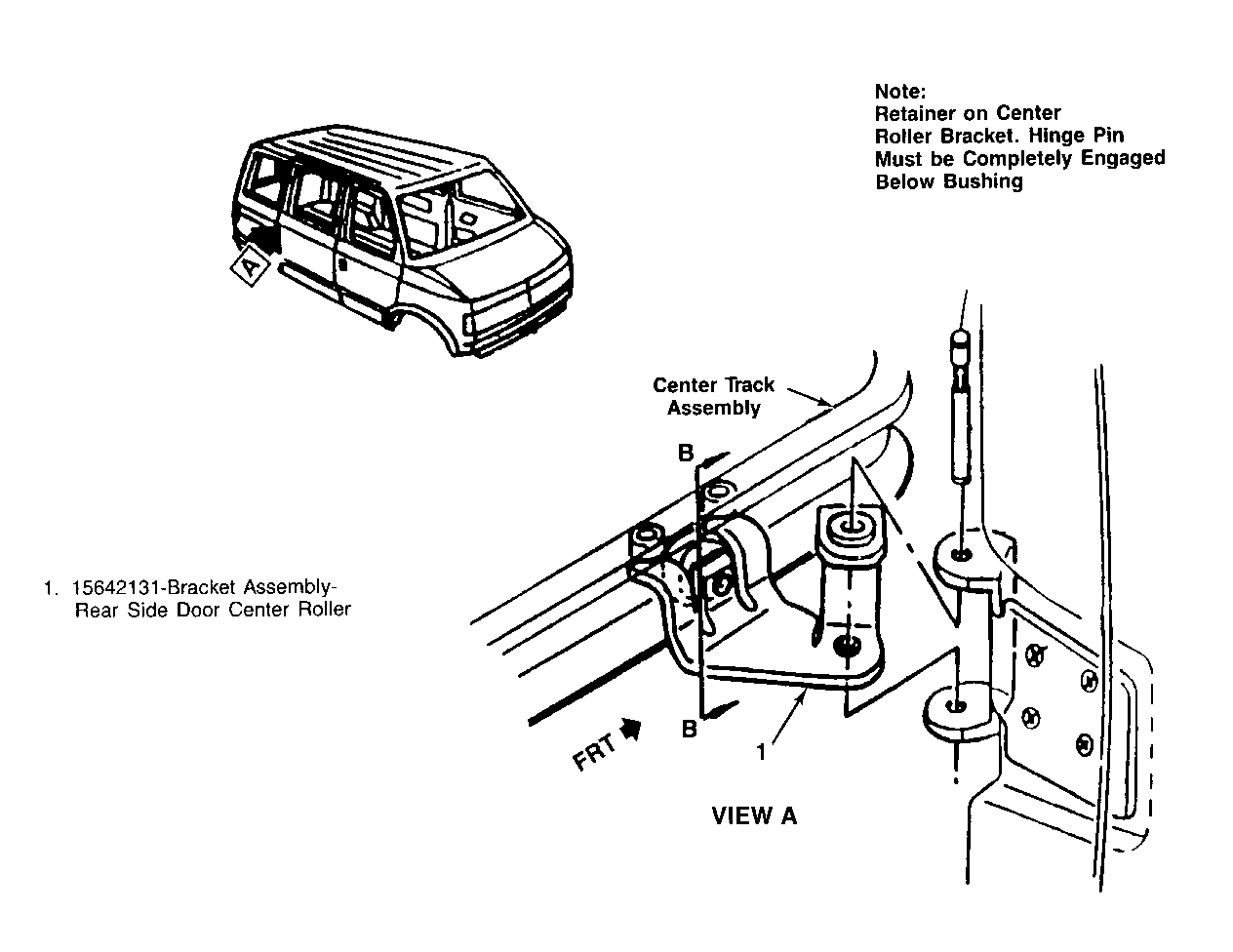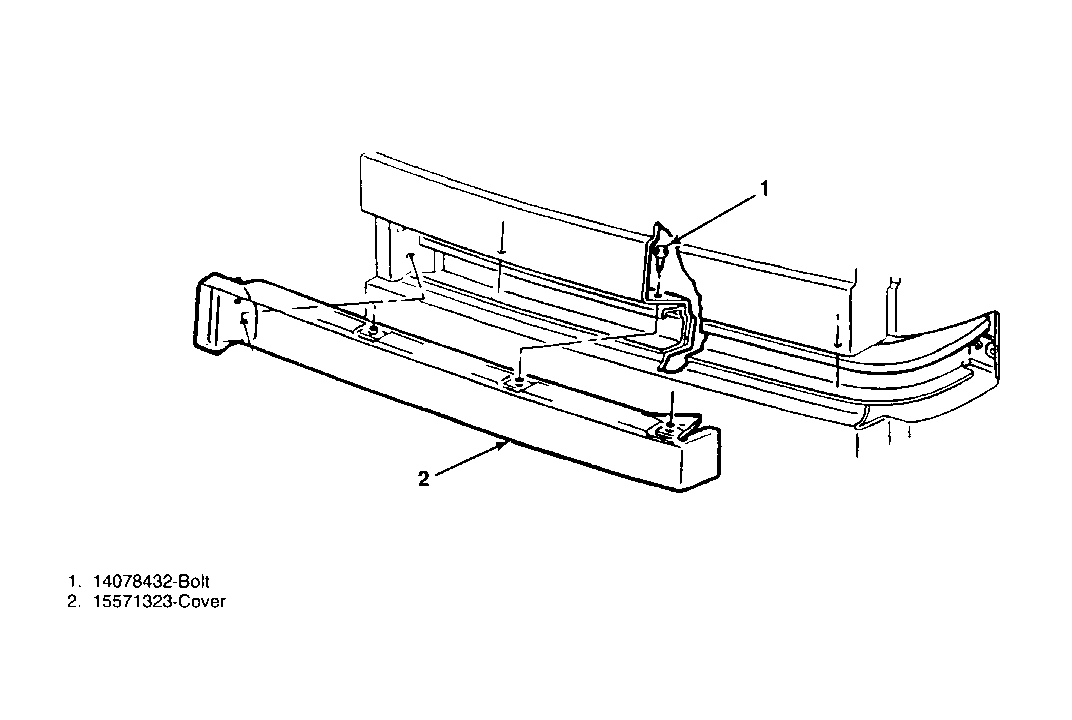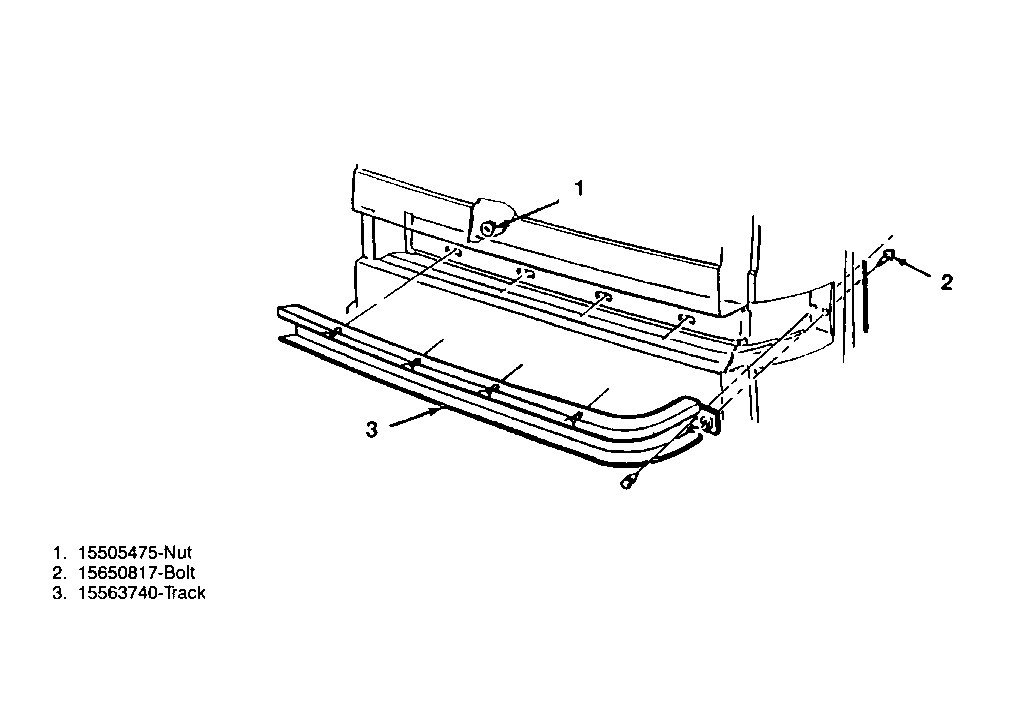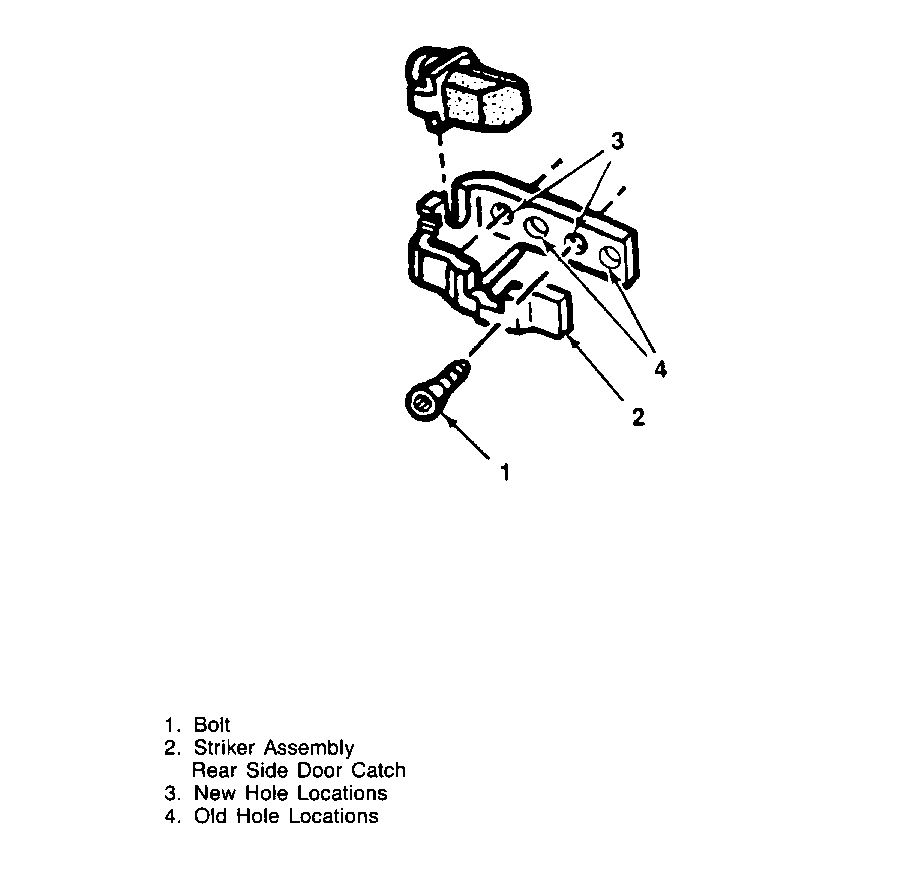SLIDING DOOR OPEN/CLOSING EFFORT (SERVICE PROCEDURES)

SUBJECT: SLIDING DOOR OPENING AND CLOSING EFFORT
MODELS: 1989-91 M/L VANS
THIS BULLETIN CANCELS AND REPLACES GMC TRUCK SERVICE BULLETIN 91-10-80 ' DATED MARCH 1991 TO CORRECT THE VIN BREAKPOINTS. ALL COPIES OF 91-10-80 SHOULD BE DISCARDED.
Some of the above subject vehicles may experience a binding condition during sliding door opening. This condition can be caused by a broken or worn center track roller bearing. If the center track roller bearing breaks or has excessive wear, the sliding door operating effort increases and may deform the center track. This condition may occur when opening or shutting the door.
To correct this condition, it is necessary to replace the center track roller bracket and center track assembly then install a new lower track striker/bumper assembly. A new lower track striker/bumper assembly is necessary to prevent door components from being damaged when the door is forcefully opened. The only difference between the new lower track striker/bumper assembly and original assembly is bolt hole locations. The hole locations have been moved rearward approximately 15mm.
VEHICLES INVOLVED
Use the new striker/bumper assembly on vehicles built prior to the following 1991 VINS:
GMC 1GDDM19ZXMB503571
CHEVROLET 1GNDM19Z3MB112077
SERVICE PROCEDURE: (Refer to Figures 1-4). ----------------------------------------- 1. Remove jack cover. 2. Remove interior quarter panel trim, if equipped. 3. Remove taillight assembly. 4. Remove track cover retainer bolts and remove the cover. Visually inspect the cover, if damaged replace. 5. Remove interior quarter trim molding, if equipped. 6. Remove center roller track. 7. Remove three screws for sliding door latch assembly and lay aside. 8. Support door weight at rear edge of door using a padded floor jack. 9. Remove pin from center track roller bracket door hinge. 10. Remove and discard roller bracket assembly from center track. 11. Remove center track nuts and bolts. Inspect track, if damaged replace. 12. Remove two torx head screws on the lower track rear side door catch striker/bumper assembly, remove and discard the assembly. 13. Using existing screws and existing body assembly holes, install a new lower track rear side door catch striker/bumper assembly (P/N 15683553). Torque screws to 20-30 N-m (15-22 lbs. ft.). 14. Reinstall the center roller bracket track using the existing nuts and bolt. Torque the nuts to 6-9 N-m (4-7 lbs. ft.). Torque the bolt to 10-14 N-m (8-10 lbs. ft.). 15. Install new rear side door center roller bracket assembly (P/N 15642131) to center roller track. 16. Reinstall existing pin through center track roller bracket door hinge and roller bracket assembly. 17. Remove padded floor jack from rear edge of door. 18. Reinstall sliding door latch assembly using three existing screws. Torque screws to 6.4-10.0 N-m (5-8 lbs. ft.). 19. Reinstall the track cover (or if damaged, replace) using the existing retainer bolts. Torque the bolts to 1.2-1.6 N-m (11-14 lbs. in.). If the track cover requires replacement, paint to match. 20. Reinstall the taillight assembly. 21. Reinstall the interior quarter trim panel, if equipped. 22. Reinstall interior quarter trim molding, if equipped. 23. Reinstall the jack cover. 24. Check door operation.
SERVICE PARTS INFORMATION
Part Number Description Quantity -------- --------------------------- -------- 15683553 Striker Asm. Rear Side Door 1
15642131 Bracket Asm. Rear Side Door 1 Center Roller
115563740 Center Track Asm. Side Door 1
115571323 Center Track Cover Asm. 1
WARRANTY INFORMATION
For vehicles repaired under warranty use:
Labor Operation: T7171 (Replaces center roller bracket, center track assembly, center track cover and lower striker/bumper bracket modification.) Labor Time: 0.9 hr.
NOTE: Labor Operation is coded to base vehicle coverage in the warranty system.




General Motors bulletins are intended for use by professional technicians, not a "do-it-yourselfer". They are written to inform those technicians of conditions that may occur on some vehicles, or to provide information that could assist in the proper service of a vehicle. Properly trained technicians have the equipment, tools, safety instructions and know-how to do a job properly and safely. If a condition is described, do not assume that the bulletin applies to your vehicle, or that your vehicle will have that condition. See a General Motors dealer servicing your brand of General Motors vehicle for information on whether your vehicle may benefit from the information.
